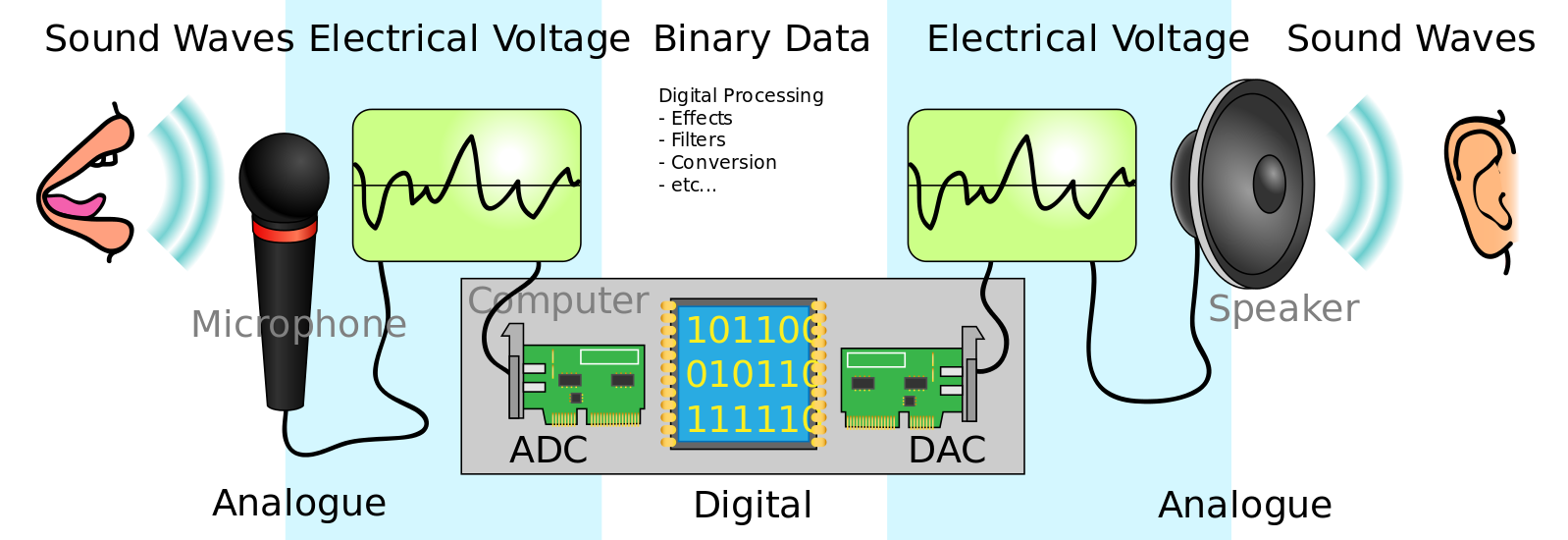Digital/Analog Signals
Digital Signal
The term “digital” originates from “digit,” which meant finger in ancient Egypt, and gradually evolved to mean numbers. In other words, it refers to countable numbers like 1, 2, etc.
In digital devices such as CD players and computers, digital signals refer to signals that use states where electricity either flows (true, ON, 1, true) or does not flow (false, OFF, 0, false). That is, digital devices process all data using only two states: 0 and 1. For more detailed information, please refer to here.
Examples of digital signals include:
- Light switch
- CD player output
- Computer data processing method
Analog Signal
The etymology of the term “analog” has the meaning of “similar” or “alike.” Analog signals are continuous signals that cannot be counted, and most signals in nature fall into this category. LP records and cassette tapes are also devices that use analog signals. Examples of analog signals include:
- Light brightness
- Sound volume
- Wind strength
- LP record output
- Cassette tape output
Digital <-> Analog Conversion
Digital devices such as computers can only input or output digital signals composed of 0s and 1s. Therefore, to input or output analog signals, digital <-> analog signal converters must be used.
A device that converts digital signals to analog signals is called a Digital-Analog Converter (DAC), and a device that converts analog signals to digital signals is called an Analog-Digital Converter (ADC).
The following shows the process where an analog signal input to a microphone is converted to a digital signal, undergoes digital processing, and is then converted back to an analog signal for output through a speaker.



